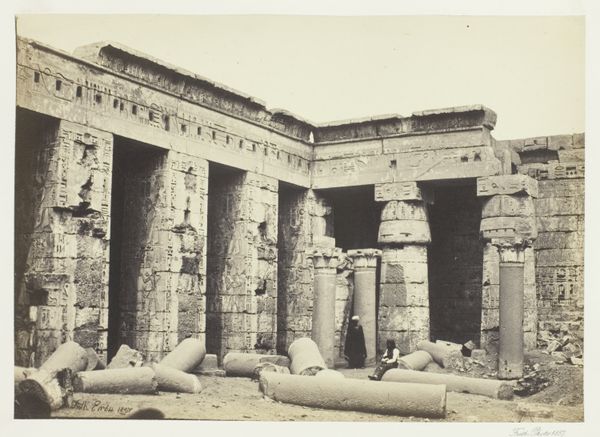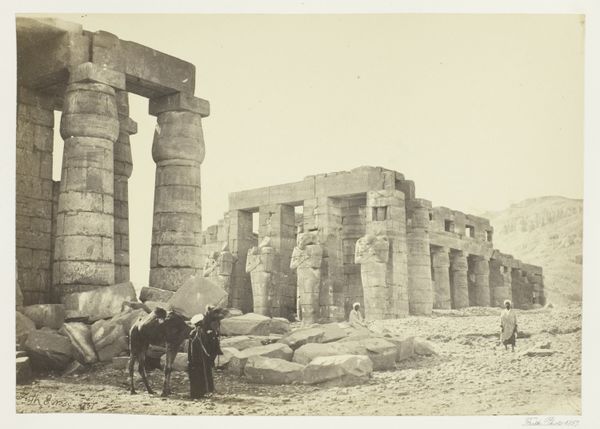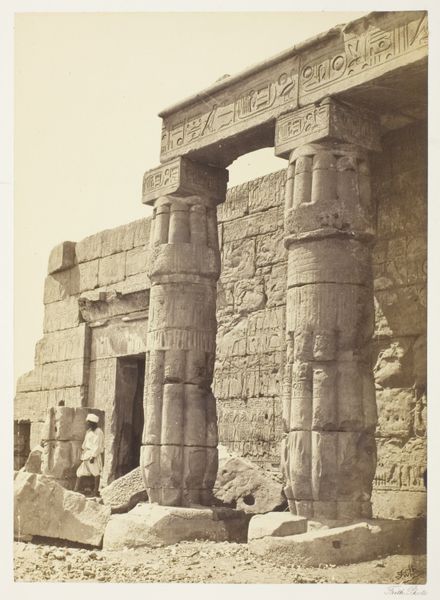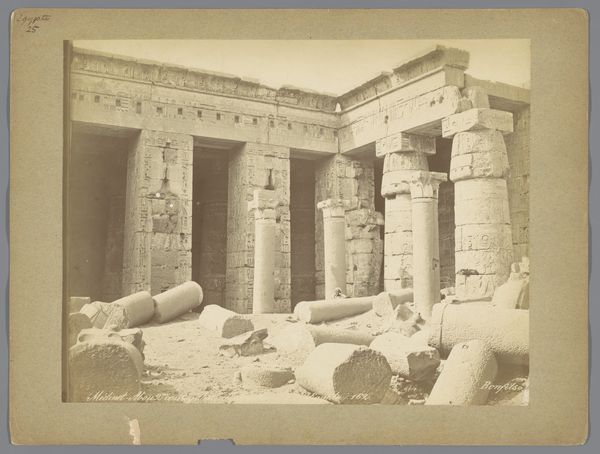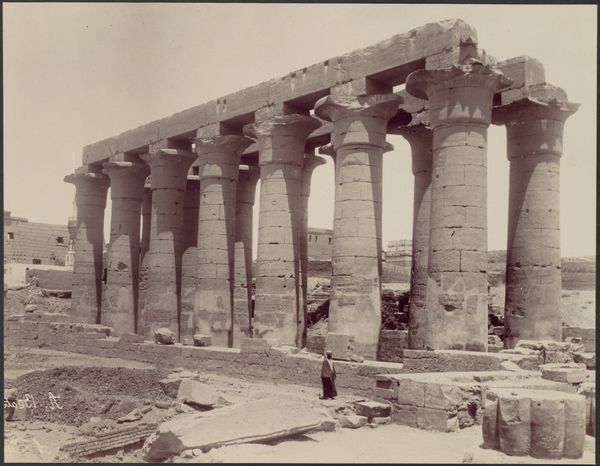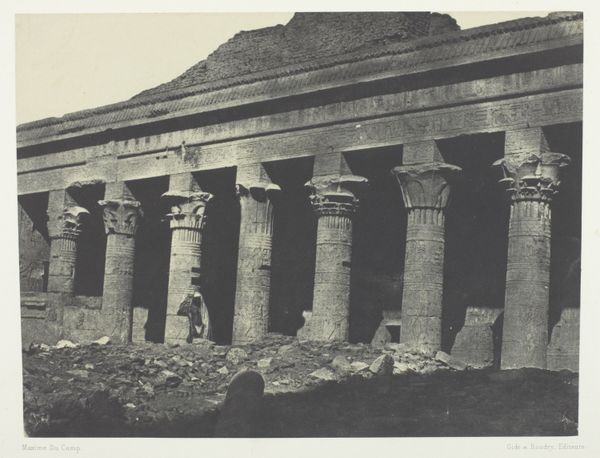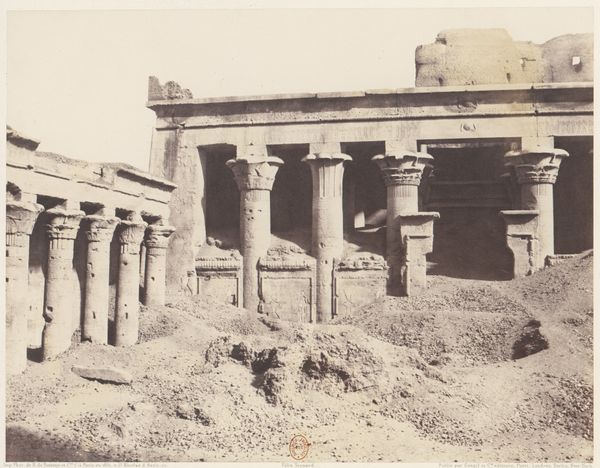
photography, architecture
#
sculpture
#
landscape
#
ancient-egyptian-art
#
historic architecture
#
photography
#
ancient-mediterranean
#
19th century
#
architecture
Copyright: Public Domain
Editor: We’re looking at "Medinet Habou, 2me cour cote sudouest," a photograph from the 1870s by Antonio Beato, currently housed at the Metropolitan Museum of Art. The image captures a courtyard view of an ancient Egyptian temple. The figures in the foreground really emphasize the scale. What can you tell us about the symbols and imagery used in a photograph like this one? Curator: This image serves as a visual echo, connecting us to a powerful cultural memory. The hieroglyphs carved onto the massive columns aren't just decoration; they’re a deliberate invocation of the pharaohs, their stories, their divine authority. Even in this photograph, stripped of its original color, those symbols retain an emotional weight, a palpable sense of history and enduring power. What do you think that sense of scale achieves? Editor: I guess it's to emphasize human insignificance next to these gods and rulers? And the contrast between light and shadow gives it almost a stage-like quality, like a theater. Curator: Precisely. The interplay of light and shadow is key. Beato is not merely documenting; he’s framing a narrative. Think about how shadow was understood in ancient Egyptian culture - a manifestation of the self. How might that impact our interpretation? Editor: Wow, so it’s not just a neutral depiction; he’s channeling the way the Egyptians saw themselves. It makes me consider the modern presence of the local people in the shot, seemingly frozen in the ancient setting, perhaps a new layer in that same tradition. Curator: Exactly. By including those figures, Beato sets up a powerful juxtaposition, bridging the ancient and the modern, showing us continuity, resilience, a constant cultural dialogue through time. What do you make of the fallen columns? Editor: At first they feel tragic, but also they might mean that change and destruction are another part of history that informs identity, too. Something is always lost, but also carried into the future. Thanks! Curator: And thanks to you – for exploring the symbolic threads that connect past, present, and future. Photography becomes a vessel for cultural memory, carrying stories across generations.
Comments
No comments
Be the first to comment and join the conversation on the ultimate creative platform.

